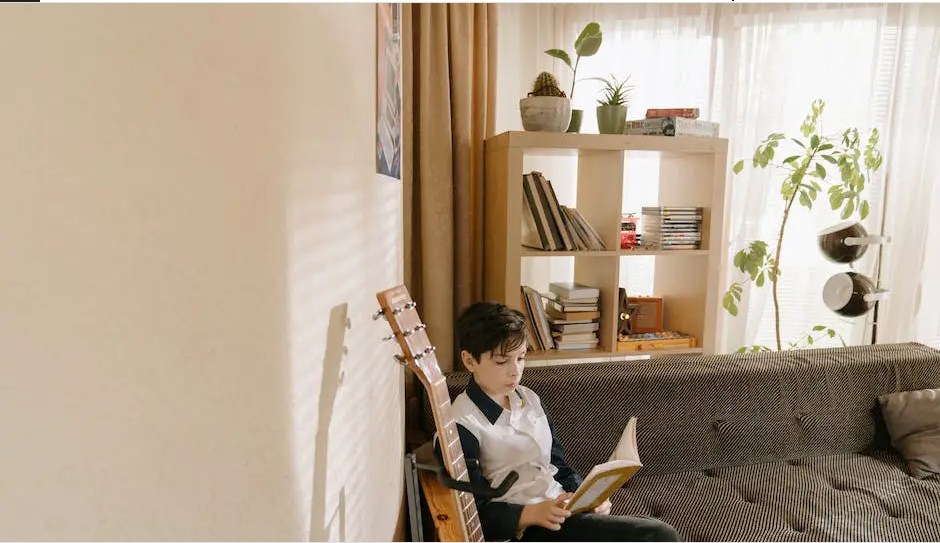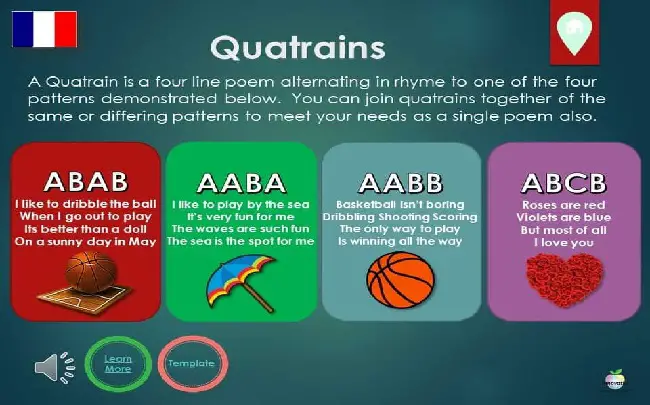This write-up is a full rti and multi-tiered intervention presentation and is quite lengthy. Nevertheless, it is a complete eye-opener and we await your thoughts in the comment section.
Education forms the cornerstone of our society, and a critical element within this sphere is how we approach the divergent needs of all students. One increasingly popular method is known as Response to Intervention (RTI), a proactive and dynamic strategy focused on identifying and addressing the individual learning requirements of each student. Coupled with a multi-tiered intervention model, these approaches form a potent combination that aims to maximize academic outcomes.
This write-up seeks to inform the reader about the essentials of RTI, its connection with the multi-tiered intervention method, their implementation in schools, and the subsequent results achieved.

Basics of RTI
Understanding Response To Intervention (RTI)
Response to Intervention (RTI) is an educational strategy used to help students who are struggling with a skill or lesson. It starts with high-quality general education in the classroom before introducing different levels of more intense, targeted interventions if needed. RTI seeks to prevent academic failure through early identification of learning and behavioural problems, frequent progress measurement, and increasingly intensive instructional interventions for children who continue to experience difficulty in their learning.
The Purpose And Significance Of RTI
The primary goal of RTI is to monitor students’ progress and identify students who are not making adequate progress in the general education curriculum. By providing specific, research-based instruction and interventions, RTI allows educators to identify and address students’ academic and behavioural difficulties early. It aims to ensure that no child is left behind academically in the general education curriculum without being given additional support and interventions.
The Key Features Of RTI
RTI operates under several fundamental principles. It starts with high-quality, research-based instruction in the general education classroom, where primary learning occurs. Additionally, RTI utilizes universal screening to identify students at risk of academic failure. Student’s academic progress is continually monitored to assess the effectiveness of the instruction and interventions. Based on these assessments, students can then receive tiered interventions based on their specific needs. The tiers represent varying degrees of intervention intensity.
Understanding The RTI Tiers
The RTI model is often represented in three tiers, each representing a different level of intervention:
Tier 1:
This is the baseline level, where all students receive high-quality, research-based instruction in the general education classroom.
Tier 2:
At this level, students who are identified as not making adequate progress receive targeted interventions in small group settings, in addition to the general education curriculum.
Tier 3:
Here, individualized interventions are provided for students who show minimal response to Tier 2 interventions.
RTI In An Educational Setting
In an educational setting, RTI involves regular observation and data analysis to drive instruction. Educators use the insights gathered from frequent assessments to develop interventions customized for individual students or small groups. This approach allows for quicker identification of the challenges students face and the implementation of appropriate interventions. Furthermore, the effectiveness of these solutions is constantly evaluated and adjusted as necessary.
Setting The Stage For RTI
The groundwork for Response to Intervention (RTI) was laid by the Individuals with Disabilities Education Act (IDEA). This important piece of legislation included provisions which enabled the use of a specified process to determine how a child responds to scientific, research-based intervention, as part of their evaluation process. As a result, the implementation of RTI in educational institutions nationwide became a possibility.
In order to ensure the RTI is highly-effective, it should be implemented in a 3-system multi-tiered model as noted above. Let’s proceed to check the components of a good multi-tiered model.
Components Of Multi-tiered Interventions
Multi-tiered interventions act as a facilitator in the sector of educational support. It spotlights and provides support to students who are potentially at risk. Utilizing a systematic and logical structure, it progressively delivers appropriate levels of support, which is contingent upon the individual needs exhibited by a student. Connecting this with the earlier mention of RTI, multi-tiered intervention melds seamlessly as a component of this model – both aimed at providing tiered, focused support for learners.
Response To Intervention (RTI) is a practical multi-tiered interventional approach used in educational settings. It involves the systematic delivery of research-based instructions and interventions that vary in intensity based on a student’s needs. The approach’s purpose is to link instructional techniques to data used to inform decision-making and improve the educational setting for all students.
Three-tier Model
One of the most commonly used models of multi-tiered interventions is the three-tier model. It provides a structured framework for delivering interventions at increasing levels of intensity.
Tier 1: Universal Support:
Tier 1, the base of the model, involves high-quality instructional practices, curricular materials, and educational methods, which are provided to all students. These universal interventions are aimed at fostering positive behavioural expectations and absorbing the significant portion of students who can meet the learning standards with minimal assistance.
Tier 2: Targeted Intervention:
When Tier 1 interventions are insufficient, a smaller subset of students may require additional support in the form of Tier 2 interventions. These targeted interventions often involve small group activities focused on academic or behavioural skills. Students in this tier are closely monitored and their progress is evaluated regularly to gauge the effectiveness of the interventions.
Tier 3: Intensive Intervention:
A very small subset of students who do not respond adequately to Tier 1 and 2 interventions may require further support. These students are provided with individualized and intensive interventions in Tier 3, which can include one-on-one tutoring or more intensive behavioural interventions.
Why Multi-Tier Interventions?
Multi-tier interventions play a pivotal role in the formation of supportive learning environments, and the RTI method exemplifies this excellently. These interventions are designed to identify and address gaps in students’ skills at an early stage, laying a solid foundation for a more effective and equitable learning experience.
To maximize the impact of multi-tiered interventions, a dynamic assessment strategy, full commitment from the education team, and a strong emphasis on the continuous use of data to guide the process are required. This approach ensures every student is given the necessary support to thrive, making it an essential element for student success and well-being.
Implementation Of RTI And Multi-tiered Intervention
Delving Into RTI And Multi-Tiered Interventions
Response to Intervention (RTI) and multi-tiered intervention systems are two strategies that effectively provide for diverse student needs. RTI is a systematic, data-driven method geared towards aiding teachers in the early detection of challenges in both the academic performance and behavioural aspects of students. Meanwhile, multi-tiered interventions, like the three-tiered Positive Behavioral Interventions and Supports (PBIS), deliver varying levels of support to accommodate the different needs of students.
Both RTI and these multi-tiered intervention systems focus on enhancing student outcomes by utilizing targeted, evidence-based practices. With these, students benefit from tailored measures designed to address their unique needs. Effective implementation of RTI and multi-tiered interventions relies heavily on data-driven decision-making. Regular scrutiny of student data is instrumental in ascertaining the effectiveness of interventions and in determining when a student should move from one tier to another.
Who Can Implement RTI And Multi-tiered Interventions?
The groundwork for the implementation of RTI and multi-tiered interventions lies in the establishment of a multi-disciplinary team. This team, composed of educators, psychologists, administrators, and other relevant staff, is responsible for developing and managing the RTI process and multi-tiered intervention system.
Case Study Of Implementation Of RTI At A Middle School
A real-life example of the successful implementation of RTI can be seen at XYZ Middle School in Anytown, USA. The school assembled an RTI team, who established a tiered model and started implementing interventions accordingly. Data-driven adjustments were made continuously. This enabled the teachers to learn more about each student and switch to teaching methods that benefitted the masses.
As a result, the school saw a significant decrease in reading and mathematical deficiencies among their students, showcasing the efficacy of RTI.
Benefits Of RTI And Multi-tiered Interventions

RTI and multi-tiered intervention systems offer several benefits. They help in the early identification of educational or behavioural issues, thus addressing and mitigating them in a timely manner. Moreover, these strategies tend to reduce the number of children who require special education and improve overall student outcomes.
As an overarching theme, Response to Intervention (RTI) and Multi-Tiered Intervention provide a comprehensive approach to improve academic achievement and encourage desirable behaviour among students. Schools can dramatically elevate the educational experience and outcomes for their students through the utilization of these structured, multi-tiered tacts, driven by solid empirical evidence.
Underpinning a broad area of educational excellence, Response to Intervention (RTI) and Multi-Tiered Systems of Support (MTSS) are established methodologies aimed at pinpointing and aiding students with academic hurdles. The benefits supplied by these proactive models are manifold for both students and educators alike.
Students receive attention to their unique learning needs, regular checks on their progress, and swift allocation of resources when they struggle. For educators, these methodologies allow for an organized procedure for early detection of academic or behavioural issues, circumventing potential future complications.
The beauty of the multi-tiered system lies in its ability to segregate the intervention into different layers or tiers that align with each student’s singular learning ambitions. The first tier is a core instruction provided to all students; the second tier provides targeted interventions to students needing additional support, and the third tier is reserved for students with significant learning struggles. These tiers work in unison to ensure that no student falls through the cracks and that everyone’s learning requirements are catered to.
RTI and MTSS advocate for an empirical, data-driven approach to decision-making, where educators base instructional strategies on student data, solidifying a more non-partisan approach to education. Consequently, student-specific curriculums, remedial strategies, and interventions are created possibly leading to a marked improvement in student performance.
These systems foster an atmosphere of synergy and collaboration among educators. Frequent assemblies are carried out to discuss students’ strides in learning, specific intervention chronicles, and the effectiveness of current practices. This promotes a sense of camaraderie, supports a shared commitment towards student success, and bolsters communication among educational staff.
Challenges Of RTI And Multi-Tiered Intervention
Despite the benefits, implementing RTI and MTSS can show up certain challenges. One of the most common is resistance to change. Teachers may be hesitant to alter traditional modes of instruction, and this resistance can stall the successful application of the RTI or MTSS model. Training and professional development can help overcome this, by equipping staff with the knowledge and skills necessary to adopt these new systems.
Another challenge is the logistical undertaking of data collection and analysis. Teachers may find it time-consuming to regularly assess student performance, analyze data, and adjust instruction accordingly. Efficient systems are necessary to handle this data and educators need training to become comfortable using them.
Limited resources can also pose a significant barrier. Implementing RTI and MTSS frameworks can demand time, well-trained personnel, suitable instructional materials, and funding which schools may not have readily available.
Lastly, a lack of understanding or misconceptions about RTI and MTSS among parents and the wider community can impede cooperation and create unnecessary friction. Clear, continual communication and education about these systems and their benefits can address these issues.
Effectiveness Of RTI And Multi-Tiered Intervention Strategies In Practice

Critical research points towards the significant effectiveness of RTI (Response to Intervention) and MTSS (Multi-Tiered Systems of Support) in enhancing student performance. Essentially, several studies show that the introduction of RTI has led to improvements in students’ reading and math scores. Similarly, adopting MTSS in schools has demonstrated meaningful reductions in disciplinary referrals while improving student behaviour.
Nevertheless, the degree of effectiveness of these models is contingent largely on accurate implementation. Schools’ inability to accurately collect and interpret data or choose the appropriate interventions may harm the expected positive outcomes. Consequently, the successful implementation of RTI and MTSS hinges greatly on factors such as school leadership, adequate teacher training, the availability of enough resources, and the active participation of all stakeholders, including parents, teachers, and students.
One prominent critique of these models is the “waiting-to-fail” approach that suggests students must first struggle before qualifying for reinforced support. Yet, supporters of these systems counter-argue that the proactive design of RTI and MTSS precisely counteracts this “wait-to-fail” scenario. The aim is to detect and rectify learning challenges in their early stages before they balloon into more complex problems.
Despite encountering certain obstacles, the advantages and potential for positive student outcomes that both RTI and MTSS offer make them the preferred choices for many educators. They’re perceived as potent instruments capable of addressing academic challenges and fostering overall student success.
Future Of RTI And Multi-tiered Intervention
The Present
Currently, Response to Intervention (RTI) and Multi-Tiered Systems of Support (MTSS) is practical, applied strategies aimed at delivering targeted support to students addressing both their academic and behavioural needs. These methodologies usually employ a tiered structure that provides support according to its escalating intensity. This design actively enables educators to progressively cater to the unique needs of each student. The highest tier specifically caters to students who necessitate individualized, specialized assistance.
The Influence of Technological Advancements
Technological advancements have begun to play a critical role in RTI and multi-tiered interventions. The use of data management systems, online learning platforms, and digital assessment tools has enhanced the implementation and efficiency of these practices. For instance, educators can now seamlessly track student progress, recognize patterns, and adjust interventions as necessary, thanks to digital data management tools.
The Trends
Due to the increasingly digital nature of education, RTI and multi-tiered intervention trends reflect a move towards technology-enriched practices. These include but aren’t limited to online assessments, adaptive learning software, AI-driven teaching aids, and machine learning algorithms for predictive analytics.
The Future
With ongoing research and technological advancements, the horizon of RTI and multi-tiered interventions is bound to expand further. In future, artificial intelligence (AI) and machine learning may play an even more significant role in these practices. AI systems could be used to identify student needs more efficiently, providing predictive analytics that would enable educators to personalize interventions at an even finer scale.
The integration of virtual reality (VR) or augmented reality (AR) technologies may also become prevalent in RTI and multi-tiered interventions. These technologies could immerse students in supportive and adaptive learning environments, providing a highly individualized and engaging experience. Furthermore, VR and AR can potentially help students with specific challenges – like those on the autism spectrum – to develop social-emotional skills in a safe, controlled environment.
Continuous research is crucial to inform and evolve RTI and multi-tiered intervention practices. Given the promising potential of technology in these fields, it’s expected that more research will be conducted on exploring the effectiveness and practicality of AI, VR, AR and other emerging technologies in the context of RTI and multi-tiered interventions.
Conclusion
The future of RTI and multi-tiered interventions appears to be promising, with technology driving its evolution towards a more efficient, individualized, and engaging practice. It is an exciting field with much potential for innovation and enhancement in the years to come.
All educational methods persist and develop through a process of iteration and refinement, and RTI, along with the multi-tiered intervention system, is no exception. Their future will likely be influenced by further research and technological advancements in the field, reshaping them to become more effective, dynamic, and targeted towards each student’s unique educational progress. By understanding these strategies and their potential, educators, parents, and policymakers can significantly contribute to providing a more comprehensive educational experience for students, one that acknowledges and respects their individual learning capabilities and challenges.




